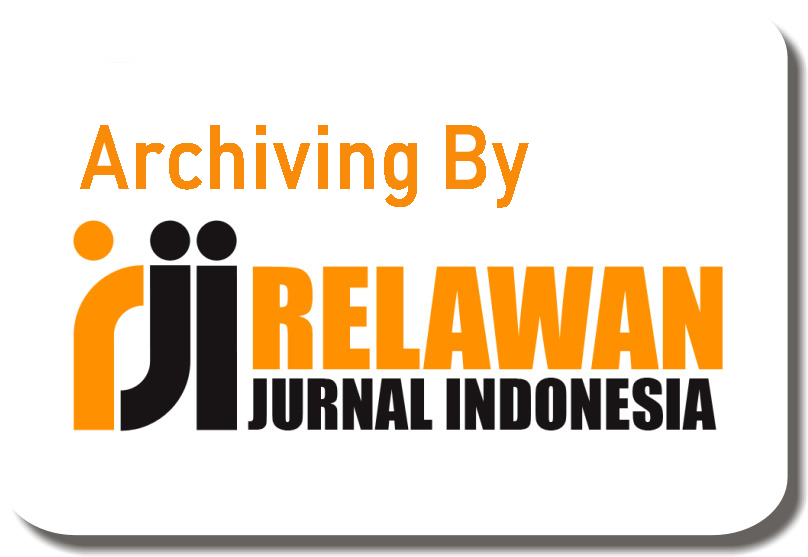Application of Picture as an Interactive Learning Media to Improve English Vocabulary in Elementary School
Abstract
Vocabulary plays a pivotal role in English learning as it forms the foundation for developing core language skills. However, many elementary students struggle with vocabulary acquisition due to limited exposure and the use of less effective instructional methods. This research aimed to examine the effectiveness of picture media as an interactive learning tool in enhancing the vocabulary mastery of fifth-grade students at Kofalagadi Elementary School, Menui District. A pre-experimental method with a one-group pretest–posttest design was applied, involving 12 students as participants. The instrument used was a vocabulary test consisting of 20 items in the form of matching, multiple-choice, and jumbled-word questions. The findings showed that the students’ mean score improved from 65.83 in the pre-test to 95.00 in the post-test, with a mean difference of 29.17 points. The paired samples t-test indicated a significance value of 0.000 (p < 0.05), confirming that there was a significant improvement in students’ vocabulary mastery after the intervention. These results suggest that picture media, when applied interactively, can serve as an effective instructional strategy to support vocabulary learning, particularly at the elementary school level. Furthermore, this study provides practical insights for teachers in selecting engaging media and demonstrates that picture-based strategies can be effectively integrated into classroom practice to foster student motivation and vocabulary development.
Keywords
Full Text:
PDFReferences
Al-Ahdal, A. A. M. H., & Alharbi, M. A. (2021). MALL in collaborative learning as a vocabulary enhancing tool for EFL learners: A study across two universities in Saudi Arabia. SAGE Open, 11(1), 1–9. https://doi.org/10.1177/2158244021999062
Anggreni, F. (2020). The Importance of Vocabulary in English Learning Process. Jurnal Ilmiah Pendidikan Scholastic, 4(1), 12-18.
Adyanti, D., Sain, Y., Faridawati, F., & Nasrullah, R. (2024). Integrating technology in English classroom at elementary school: EFL pre-service teacher perspective. Klasikal: Journal of Education, Language Teaching and Science, 6(3), 839–850. [https://doi.org/10.52208/klasikal.v6i3.1235](https://doi.org/10.52208/klasikal.v6i3.1235)
Fitriana, R. O., Hadi, M. S., & Izzah, L. (2021). Improve students’ English vocabulary skills with flashcard media. Jurnal Ilmiah Pendidikan Profesi Guru, 4(3), 521–530. https://doi.org/10.23887/jippg.v4i3.39029
Fleming, N. D., & Mills, C. (1992). Not another inventory, rather a catalyst for reflection. To Improve the Academy, 11(1), 137-155.
Fernanda, P., Nasrullah, R., Faridawati., Maulina., Sain, Y., & Syarif, A. R. (2024). Motivasi siswa dalam belajar bahasa Inggris. Mataoleo: Jurnal Pendidikan Bahasa Inggris dan Linguistik, 1(1), 13–22.
Faridawati, F., Lisna, L., & Nasrullah, R. (2024). Enhancing vocabulary instruction through strategic media integration: A case study on media utilization at tertiary level. Jurnal Ilmu Manajemen Sosial Humaniora (JIMSH), 6(2), 214–223. https://doi.org/10.51454/jimsh.v6i2.7542
Syarif, A. R.,Faridawati., Nurfadila., Syahriani. (2025). YouTube video in improving senior high students’ vocabulary mastery. Klasikal: Journal of Education, Language Teaching and Science, 6(3), 851–860. [https://doi.org/10.52208/klasikal.v6i3.1235](https://doi.org/10.52208/klasikal.v6i3.1235)
Hameleers, M., Powell, T. E., Van Der Meer, T. G. L. A., & Bos, L. (2020). A Picture Paints A Thousand Lies? The Effects And Mechanisms Of Multimodal Disinformation And Rebuttals Disseminated Via Social Media. Political Communication, 37(2), 281–301. Https://Doi.Org/10.1080/10584609.2019.1674979
Julaiha, S., Syahputri, D., & Prihatini, S. (2022). The Effect Of Picture As Media To The Students’ Achievement In Vocabulary. Excellence: Journal Of English And English
Liando, N. V. F., Mangare, A. R. D., & Olii, S. T. (2021). Using Bright–English for Beginners Application to Enrich Students’ Vocabulary. Jurnal Pendidikan Bahasa Inggris Undiksha, 9(3), 290–297. https://doi.org/10.23887/JPBI.V9I3.39126
Liando, N. V. F., Tatipang, D. P., Tamboto, G., Poluan, M., & Manuas, M. (2022). Pictures as a Learning Media in Teaching Vocabulary. Jurnal Ilmiah Universitas Batanghari Jambi, 22(3), 1944–1949. https://doi.org/10.33087/jiubj.v22i3.2832
Mayer, R. E. (2001). Multimedia learning. Cambridge University Press. https://doi.org/10.1017/CBO9781139164603
Maulina, & Sari, Y. (2022). Research methods in the teaching and learning pronunciation using social media and technological tools. Harvest: An International Multidisciplinary and Multilingual Research Journal, 2(1), 55–63.
Maulina, Nasrullah, R., & Wanci, R. (2022). Social media utilization for self-regulated English learning during COVID-19 outbreaks. TELL: Teaching of English Language and Literature Journal, 10(1), 75–80. https://doi.org/10.30651/tell.v10i1.12599
Maulina, Ladjagang, R., Nasrullah, R., Esteban Jr., A. M., Hastianah, H., & Herianah, H. (2022). Research methods in teaching listening skills utilizing technology media. Journal of Education and Teaching (JET), 3(1), 69–80. https://doi.org/10.51454/jet.v3i1.140
Nurdini, R. A. (2018). the Use of Picture To Improve Students’ Speaking Skill in English. IJET (Indonesian Journal of English Teaching), 7(2), 157–162. https://doi.org/10.15642/ijet2.2018.7.2.157-162
Posner, M. I., & Petersen, S. E. (1990). The attention system of the human brain. Annual Review of Neuroscience, 13(1), 25-42. https://doi.org/10.1146/annurev.ne.13.030190.000325
Paivio, A. (1986). Mental representations: A dual-coding approach. Oxford University Press.
Reynolds, B. L., Xie, X., & Pham, Q. H. P. (2022). Incidental vocabulary acquisition from listening to English teacher education lectures: A case study from Macau higher education. Frontiers in Psychology, 13, 1–18. https://doi.org/10.3389/fpsyg.2022.993445
Setiawan, M. R., & Wiedarti, P. (2020). The Effectiveness Of Quizlet Application Towards Students’ Motivation In Learning Vocabulary. Studies In English Language And Education, 7(1), 83– 95. Https://Doi.Org/10.24815/Siele.V7i1.15359
Setiawan, M. R., & Wiedarti, P. (2020). The Effectiveness Of Quizlet Application Towards Students’ Motivation In Learning Vocabulary. Studies In English Language And Education, 7(1), 83– 95. Https://Doi.Org/10.24815/Siele.V7i1.15359
Stein, J.-P., Krause, E., & Ohler, P. (2021). Every (Insta)Gram Counts? Applying Cultivation Theory To Explore The Effects Of Instagram On Young Users’ Body Image. Psychology Of Popular Media, 10(1), 87–97. Https://Doi.Org/10.1037/Ppm0000268
Salmon, A., Alfons, F. R., & Manulete, P. (2024). Increasing students’ vocabulary mastery through picture media. KOLI: Jurnal Pendidikan Bahasa dan Sastra, 4(2), 115–123. https://doi.org/10.36582/koli.v4i2.17083
Sweller, J. (1988). Cognitive load during problem solving: Effects on learning. Cognitive Science, 12(2), 257-285. https://doi.org/10.1207/s15516709cog1202_4
Setyaningsih, S. I. S., Fansury, A. H., & Maulina. (2022). Verbal-linguistics intelligence towards students’ speaking English skills using digital media (audio visual) in the classroom. Klasikal: Journal of Education, Language Teaching and Science, 4(2), 296–301.
Wahyuni, A., Syarif, A. R., Faridawati, F., & Nurdiansa, E. S. (2025). Improving elementary students’ vocabulary mastery through educational English videos: A study in Moramo. Klasikal: Journal of Education, Language Teaching and Science, 7(2), 739–747. [https://doi.org/10.52208/klasikal.v7i2.1370](https://doi.org/10.52208/klasikal.v7i2.1370)
DOI: https://doi.org/10.31004/jele.v10i5.1503
Refbacks
- There are currently no refbacks.
Copyright (c) 2025 Faisa Jamal, Maulina Maulina, Faridawati Faridawati, Eko Saputra Nurdiansa

This work is licensed under a Creative Commons Attribution-ShareAlike 4.0 International License.



